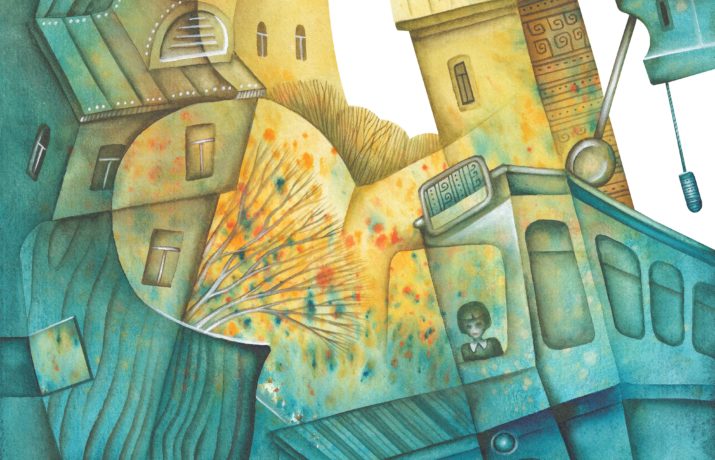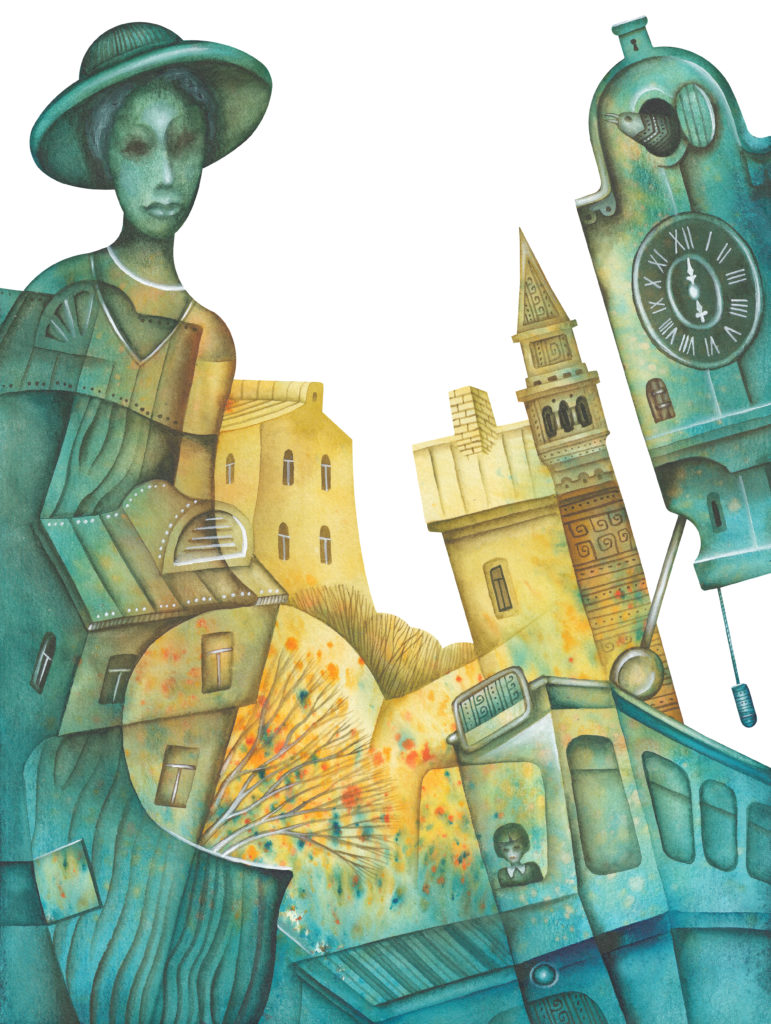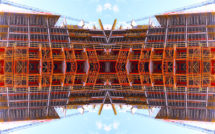

An intro to our special feature, Contemporary Urban Research in the European City.
“But what a city! (…) With electric surface tramways installed. With the most modern system, with a model underground railroad, with gay little kiosks of stations leading down to it, built in native majolica, its tunnel lined with white tiling, its cars clean and well ventilated; with a superb opera-house, comfortable theaters, well-appointed shops full of pretty things, churches, monuments, superbly appointed clubs, luxuriant public parks; with museums full of rare collections in art and science,” wrote the American traveler and author F. Berkeley Smith about Budapest, the newly emerged second capital of the Austro-Hungarian empire in 1903. His photographic description, however, let the reader feel, that this cityscape could have been in any other contemporary European metropolis at the turn of the 19/20th century.
As the historical research already pointed out, global urbanism is not a phenomenon of our post-modern times but emerged already during the long 19th century. Nevertheless, urban historians, anthropologists and sociologists, but also architects and planners, try to catch and define this always changing, multilayered and complex phenomenon, called city. Thus, what makes a city a city is still a relevant and complex issue in the scholarly debates despite of the great scholarly works of the last hundred years from Georg Simmel to Janet Jacobs, Henry Lefebvre and many other important and well-known authors.
Due to the debate on the city and urbanism emerged the discourse about the European city as such. Is there a certain type of city such as the European one? Or more precisely: what makes a European city European? They are so different but, for a visitor coming from other continents and regions, they may seem to be so alike. Following Max Weber, the German sociologist Walter Siebel argued in his book on the European city (constructing so an ideal type) that one of its main characteristic is the urban public space (Siebel:2004). In the course of this, Siebel highlighted the role and the development of the idea of public spaces.
The history of the concept of public space and the public itself – that placed the connection between the built, physical space and the exercise of political rights in the center of the European political and philosophical tradition – has its roots in the Greek city-state (Polis). Terms such as agora, urbs and civis are part of the social thought, as well as of the cultural understanding and planning of the European City. The connection between public space and the public was fundamental for European urban history, and since the 18th century, it represents – both as a normative medium and as a requirement for legal, rational governance – a core value of the European political culture. During this process emerged an urban bourgeoisie whose members had been the socially and economically self-determined and self-employed urban citizens. The experiences of this urban bourgeoisie were incorporated into the legal systems of the philosophy of the Enlightenment, and they also manifested themselves in the bourgeois (“bürgerliche”) revolutions of 1848, in which all facets of the bourgeois public sphere became visible in the urban space (Habermas 1990).
Urbanization and industrialization resulted in the development of “modern” urban cultures, and “modern” ways of life (Simmel 1995), and also in the emergence of an urban public sphere (Brunner 1978). Since then, various theories have addressed the changing use and understanding of urban public space. After the collapse of imperial structures in 1918, Hannah Arendt defined it as a space of conflict (Arendt 2002). In contrast to this, the dictatorial and staged public spheres of the 1930s and 1950s could be described with Habermas’ concept of the “representative public” (Habermas 1990). After 1945, in the post-war period, the work of Jürgen Habermas (1962) “The Structural Transformation of the Public Sphere” became one of the most influential theories with a lasting effect on the image and understanding of the public sphere, and, thus, also of urban public space. The central message of his book was that mainly two criteria determine the access to urban public sphere (thus, to the space): education and property. These criteria however became problematic in the light of the social, economic and cultural transformations of the so called “second modernity” (Beck 1996), especially regarding the appearance of digitalization and globalization. Furthermore, theoreticians emphasized processes of increasing privatization and commercialization primarily within the US context that – following the argument of Sennett (1977) – led to the decay and ongoing disappearance of urban public spaces, also in Europe.
By now, urban public spaces have become strongly contested resources in present European cities, where multiple agents are claiming the right to these spaces. Reacting to this development, this special issue concentrates on European cities, focusing on their public spaces, their histories and their rich heritages.
In the interview “Migration, Integration, and Heritage in the ‘European City,” ethnologist Wolfgang Kaschuba, founder and initiator of the Berlin Institute for Integration and Migration Research (BIM), discusses the mission of the Institute by highlighting the motives and dynamics of social mobility and movement, cultural inclusion and exclusion processes, as well as ethnic and religious formations. Kaschuba provides core insights into the concepts of European ethnology and the European city and argues that only social mixture and cultural diversity can guarantee urban liveliness.
“What Begins at the End of Urban Tourism, As We Know It?” wonders Christoph Sommer and argues that trans-/local forms of tourism help to make a city and to shape concrete urban places. At the same time, “overtourism” at historic sites triggers controversies about appropriate forms of remembrance. The entanglement of cities and tourism, therefore, must be on the agenda of tourism as well as urban studies, requiring further conceptual and empirical investigation.
Juli Székely’s work “Absences and Excesses in the Memory Politics of Budapest after 1989” sees both “absence” and “presence” intertwined in Hungarian memory politics and considers them essential for political understanding after 1989. Székely explores the critical notion of absence and sheds light on its actual meaning in relation to memorials. She also examines the emergence of multiple and competing commemorative practices and the memory crises resulting from them.
Pekka Tuominen’s case study “Historical Layers and Cultural Intimacy: An Ethnographic Case Study of Kontula,” focuses on the Kontula district in Helsinki, Finland. The study takes into account the local and historical consciousness as well as conceptions of urban space, thereby questioning the dominant and metanarratives of urban studies. Albeit useful, these metanarratives, according to Tuominen, do not always apply to specific cases.
There is no such thing as a European approach to urban history, claims Cor Wagenaar in his article “Public Spaces, Urban Heritage, and Politics,” and requests that historians be hypercritical about the uses and abuses of history. Wagenaar calls for the need to clearly distinguish between artistic and documentary values and warns of their use as arguments in contemporary political and cultural debates.
Heike Oevermann’s article “Industrial Heritage, Historic Architecture, and Today’s Transformations of Cities,” calls for a research instrument that allows for the synchronic analysis of constellations of various discourses in all planning processes, particularly with issues specific to industrial heritage sites. With such an analysis of urban transformation processes, decisions could be expedited, which, otherwise, would be held up by conflicts surrounding differences in values and objectives.
Pachenkov and Voronkova’s comparative analysis “From Tactical Urban Interventions to Strategic Ones: Berlin and St. Petersburg” reveals that, while public space was once threatened by privatization and commoditization, the lack of demand for public space is equally dangerous. The researchers argue that citizens need to be active in order for public spaces to emerge and showcase artistic practices as a form of creative urban intervention.
Ayse Erek discusses in “Commoning in Action: Walking in St. Petersburg, Urban Gardening in Istanbul,” a walking act in St. Petersburg’s Kanonersky district, formerly an urban wasteland, and combines this experience with an act of urban gardening in Istanbul as ways of urban exploration, intervention and revitalization to reclaim green spaces through new usages.
Eszter Gantner’s work “Linked by Research: Berlin and St. Petersburg,” further elaborates on the threat facing the urban public spaces in both locations and showcases best practices of urban intervention. Whether via social or active participatory forms of intervention, different citizen demands require new strategies on the urban administrative levels to minimize conflict.
In the curated show “Unseen,” Larissa Fassler‘s art documents the mundane via large-scale plan drawings while Chris Neyen redefines architecture and infrastructure as inventive narratives by layering colors and shapes. Vladimir Abikh forces the viewer to engage with the lesser appealing side of the city, those aspects which inhabitants and tourists alike prefer not to see.
Campus highlights how Helsinki University researcher Pekka Tuominen collaborated on the idea of Kontula Electronic, a festival in Helsinki’s Kontula district, to help overcome urban boundaries through artistic quality and active participation both in planning and interacting with its inhabitants.
Eszter Gantner holds a Ph.D. in History from the Humboldt University of Berlin. She has studied Law, History and Political Sciences in Budapest, Jerusalem, and Berlin. Currently she is academic employee and project coordinator (LOEWE) at the Herder-Institute for Historical Research on East Central Europe in Marburg, Germany.
Nicole Shea is the Director of the Council for European Studies at Columbia University and the Executive Editor of EuropeNow
Research
“Absences and Excesses in the Memory Politics of Budapest after 1989” by Juli Székely
“Historical Layers and Cultural Intimacy: An Ethnographic Case Study of Kontula” by Pekka Tuominen
“What Begins at the End of Urban Tourism, As We Know It?” by Christoph Sommer
“Public Spaces, Urban Heritage, and Politics” by Cor Wagenaar
“Linked by Research: Berlin and St. Petersburg” by Eszter Gantner
“Commoning in Action: Walking in St. Petersburg, Urban Gardening in Istanbul” by Ayse Erek
Interviews
Visual Art
“Unseen,” an art series curated by Nicole Shea
Reviews
“City of the Future”: Built Space, Modernity, and Urban Change in Astana, reviewed by Adrien Fauve
Jewish Salonica: Between the Ottoman Empire and Modern Greece by Devin E. Naar
Campus
“Urban Research in Europe: An Interview with Pekka Tuominen” by Eszter Gantner
References:
Arendt, Hannah (2002): Vita activa oder vom tätigen Leben. Zürich.
Beck, Ulrich (1996): Das Zeitalter der Nebenfolgen und die Politisierung der Moderne. In: Ders. et al (ed.):
Reflexive Modernisierung. Eine kontroverse. Frankfurt a. M., s. 19-112.
Benevolo, Leonardo (1993): Die Stadt in der europäischen Geschichte. München.
Brunner, Otto et al (ed.) (1978): Geschichtliche Grundbegriffe. Stuttgart.
Habermas, Jürgen (1990): Strukturwandel der Öffentlichkeit. Frankfurt a. M.
Habermas, Jürgen (1990): Strukturwandel der Öffentlichkeit. Frankfurt a. M.
Lefebvre, Henry (1969): Le droit à la ville. Paris.
Sennett, Richard (1977): The Fall of Public Man. New York.
Simmel, Georg (1995): Die Großstädte und das Geistesleben. Gesamtausgabe Band 7. Frankfurt a. M.
Siebel, Wolfgang (2004) (ed.): Die Europäische Stadt. Suhrkamp, Frankfurt am Main
Smith, F. Berkeley (Frank Berkeley; Budapest: The city of the Magyars, New York 1903, 21-22
Photo: Lady, surrounded by architecture by Eugene Ivanov | Shutterstock
Published on May 1, 2018.




